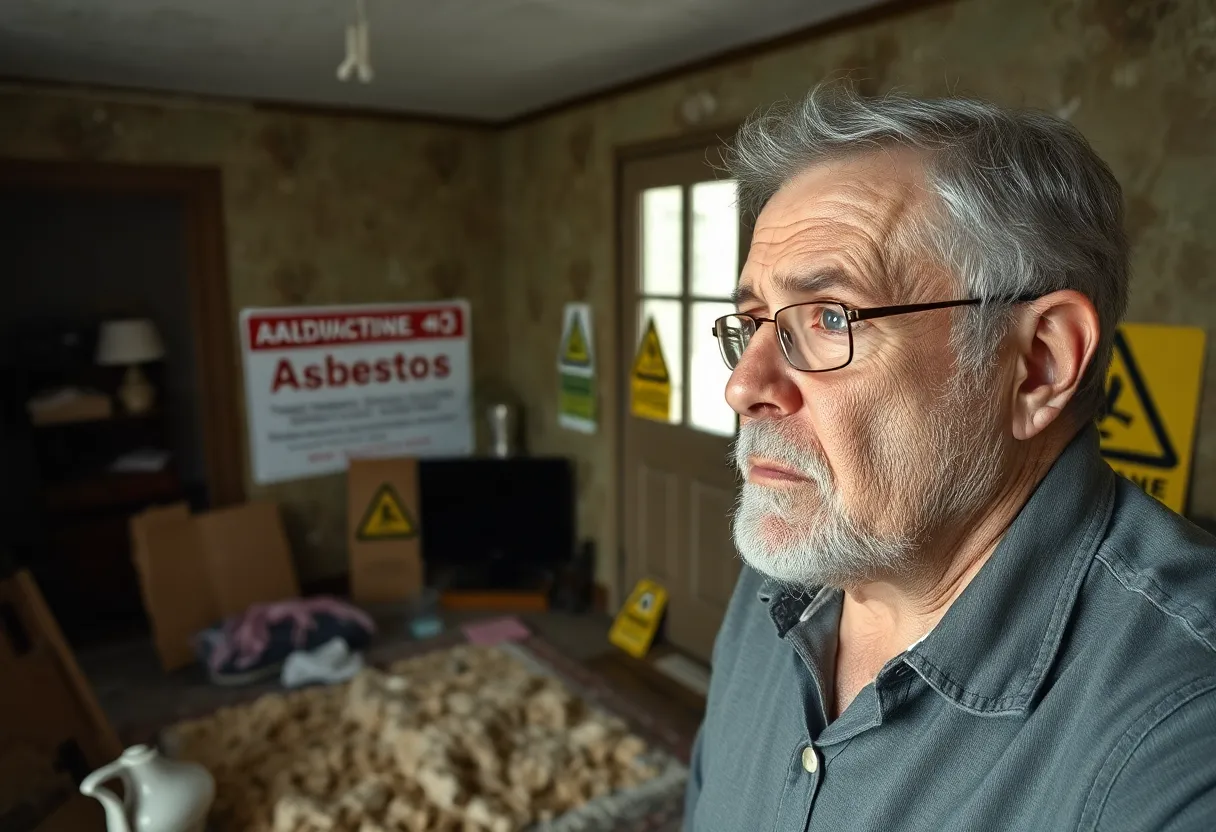News Summary
Homeowners in properties built before 2000 are being warned about the dangers of asbestos exposure, despite its ban in the UK in 1999. Asbestos can be found in various building materials and poses serious health risks, including lung cancer and asbestosis. Alarming statistics reveal thousands of deaths linked to asbestos, especially among teachers and children. The need for greater awareness and management of this hazardous material is urgent, as many schools still contain asbestos, jeopardizing the health of future generations.
Warning for Homeowners: Asbestos Still Poses a Threat in Older Properties
Homeowners living in houses built before the year 2000 have been put on alert as potential risks of asbestos exposure continue to loom. Although the UK banned asbestos in 1999, many residential and commercial buildings constructed prior to this date may still contain this hazardous material, leading to grave health concerns.
The Legacy of Asbestos
Asbestos gained widespread popularity from the 1930s until its ban for its exceptional fire resistance, durability, and insulating properties. Yet, these very attributes contributed to a devastating legacy; once disturbed, asbestos can release microscopic fibers into the air, which are easily inhaled and can have severe health consequences. The health risks associated with asbestos exposure are substantial, with conditions such as asbestosis, lung cancer, and mesothelioma topping the list.
Where to Look for Asbestos in Your Home
Common locations where asbestos may hide include floor tiles, ceilings, pipe insulation, roofs, exterior sidings, underlayments, and ductwork. This hazardous material doesn’t just lurk in homes; garages and other buildings constructed during the period when asbestos was commonly used may also contain it.
Dangerous Statistics
The statistics surrounding asbestos exposure in the UK are alarming. Asbestos is linked to approximately 5,000 deaths each year, making it the leading cause of work-related deaths in the nation. Moreover, between 1980 and 2017, an estimated 1,000 teachers and support staff, alongside 9,000 former pupils, lost their lives to mesothelioma due to exposure within schools. The trend is unsettling; in 2020 alone, there were 2,544 mesothelioma deaths, with figures showing a worrying upward trajectory over the last half-century.
The Impact on Schools
Currently, research indicates that over 80% of state schools in England and about 60% in Scotland and Wales still have asbestos present. Many of these buildings were constructed between 1950 and 1999, raising concerns about the deteriorating conditions which may escalate the risk of asbestos exposure for teachers and students alike. Deteriorating buildings pose significant threats, as damaged materials can release hazardous fibers into the air.
Continued Health Risks
Asbestos-related diseases often don’t surface until decades following exposure. Once diagnosed, patients frequently face a grim prognosis, with many succumbing to the disease within just two years. In schools specifically, there were concerning reports of 291 incidents of asbestos management failures between 2000 and 2014, further highlighting the urgent need for effective oversight and proper management.
Childhood Exposure
Alarmingly, research shows that children exposed to asbestos face a significantly higher risk of developing mesothelioma in their lifetimes. It is estimated that children are five times more likely to suffer from this rare but aggressive cancer than adults, emphasizing the dire need for renewed focus on asbestos awareness and management.
The Call for Action
The UK government has been criticized for its inaction regarding asbestos management, particularly in school buildings. Current regulations operate under the assumption that asbestos is safe if left undisturbed; however, many argue that this is insufficient. Legislative calls for the gradual removal of all asbestos from public buildings within the next 40 years have been rejected, forcing public health advocates to voice their concerns loudly.
A Need for Vigilance
The fight against asbestos-related diseases is a crucial one. With innovative treatments progressing, prevention through increased awareness and proper management remains critical. Homeowners are urged to consult professionals when dealing with suspected asbestos rather than attempting risky DIY removals that could exacerbate risks. Awareness of asbestos hazards is essential for protecting future generations and curbing the rising tide of mesothelioma cases linked to this killer mineral.
Deeper Dive: News & Info About This Topic
HERE Resources
Asbestos Crisis: Nearly 5 Million Homes at Risk in the UK
Philadelphia School District Faces Criminal Charges Over Asbestos Violations
A Shocking Verdict: $9 Million Awarded in Mesothelioma Case
The Hidden Danger Lurking Above Your Driveway: Asbestos Garage Roofs
Post Office Evacuated in Torrance Over Asbestos Concerns
Warning: Asbestos Exposure Still a Risk in Workplaces
Mesothelioma Survivors Highlight the Impact of Support Services
Urgent Call for Asbestos Safety Measures in Havering Council Properties
Chalford Playing Field Closed Due to Asbestos Concerns
Delaware Jury Awards $9 Million in Landmark Mesothelioma Case
Additional Resources
- The Conversation: How Asbestos Exposure Continues to be a Dire Health Risk
- Wikipedia: Asbestos
- The Guardian: UK Asbestos Maker Withheld Information on Material Risks
- Google Search: Asbestos Risk Exposure
- The Conversation: The Hidden Danger of Asbestos in UK Schools
- Google Scholar: Asbestos in Schools
- Encyclopedia Britannica: Asbestos
- Google News: Asbestos Management



















